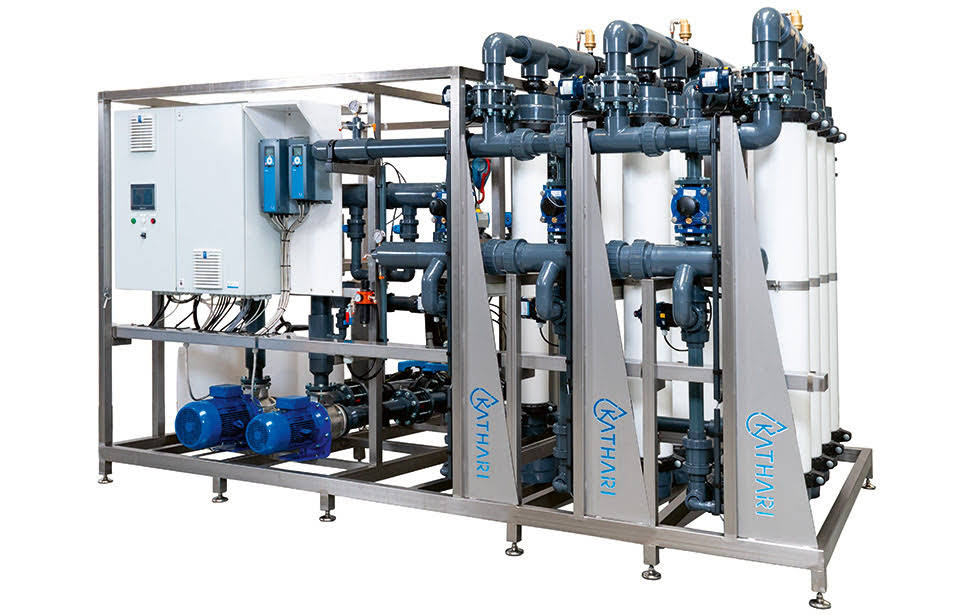- English

Re-using drain water in the correct way allows growers to save on expensive nutrients and water, with the additional advantage of reducing the environmental burden. Because drain water can contain pathogens, effective treatment is essential. The Kathari gives your crops optimum protection against viruses, bacteria and fungi – with high removal certainty and low operating costs. It achieves a high Log reduction of viruses, bacteria and fungi by means of ultrafiltration (UF). And as UF is a low-energy technique and uses no antimicrobial products, it is very cost-efficient. The Kathari therefore offers a wide range of benefits.
Ultrafiltration
UF works by physically removing pathogens, unlike the more standard techniques that focus mainly on killing them. UF uses membranes, which are actually filters with very small pores. These pores are just the right size to hold back the viruses, bacteria and fungi but still allow dissolved salts, such as nutrients, to pass through. This process is not affected by water turbidity. It is therefore an excellent technique for purifying water, and also makes it possible to re-use water and nutrients. The UF method has a great track record over many decades and is used in water treatment situations worldwide. We have now optimised this technique for use in greenhouse horticulture.
Advantages of the Kathari
• Enables re-use of water and nutrients
• Physical removal of:
• viruses (Log4)
• bacteria and funghi (Log6)
• organic pollution
• Less organic/biological pollution in the watering system
• Insensitive to water turbidity
• Very low operational/energy costs
• Reduces environmental burden
Application UF for ToBRFV removal
The Kathari UF is an excellent filtration technique for the removal of ToBRFV. This trial, conducted by Groen Agro Control, tested the effectiveness of UF of ToBRFV-contaminated drain water. After filtering ToBRFV-contaminated drain water with a UF filter, no contamination was found in a bioassay with two times five tomato plants. Therefore, in this test no virus was detected after ultrafiltration.